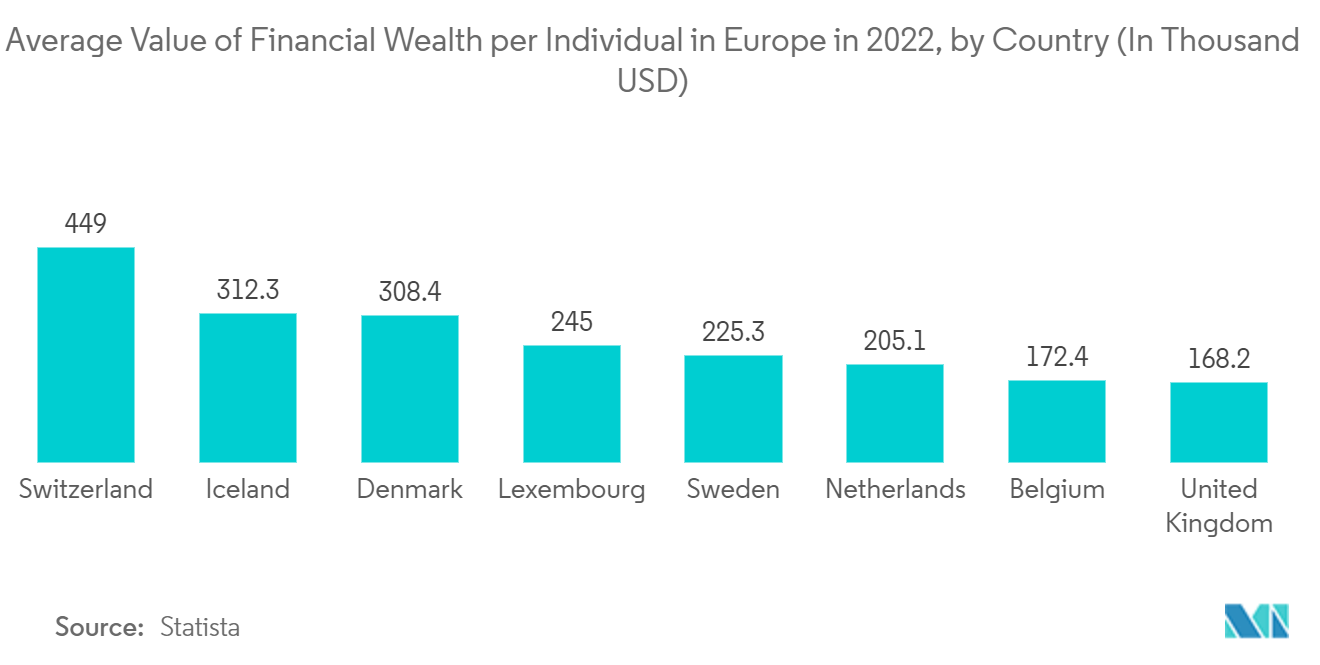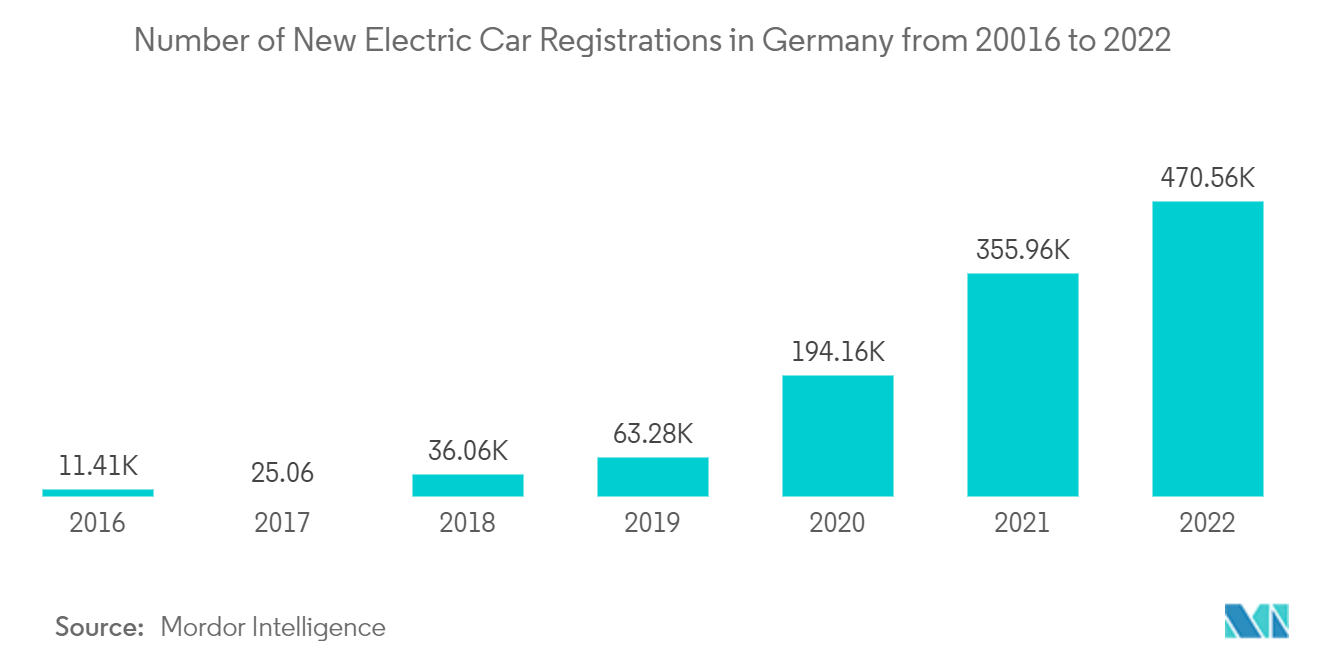Market Trends of Europe Automotive High Performance Electric Vehicles Industry
Increasing Demand of Luxury Vehicles is Expected to Drive the Market
Currently, the IC engine segment leads the high-performing luxury car market. However, during the forecast period, the demand for IC engine vehicles is anticipated to slow down as major players in the European region are planning to completely stop the production of gasoline cars and focus on manufacturing electric cars only. For instance,
- In September 2023, Volvo Cars announced the end of production of all its diesel-powered models by early 2024. The company plans to sell only fully electric cars by 2030 and to be a climate-neutral company by 2040. Recently, the company also announced to exit of the development of new combustion engines.
It can be attributed to growing environmental concerns due to rising exhaust emissions. Governments in Europe and environmental associations are tightening emission norms. A 45% reduction in CO2 emissions by 2030 requires more than 400,000 zero-emission vehicles on the road. Therefore, various government initiatives and regulations will also boost the growth of high-performance electric luxury vehicles in the market.
As a result, the demand for sustainable and eco-friendly transportation, such as EVs, is increasing, with governments offering more incentives and subsidies to these vehicle owners.
Currently, major players, such as Mercedes-Benz, BMW, Audi, and Tesla, cover a significant percentage of the share in the EV segment of the luxury car market. Additionally, luxury car component manufacturers are also focusing on developing next-generation smart mobility technologies, such as autonomous driving, personal voice assistance, and retinal recognition. These are expected to boost the sales of luxury EVs over the forecast period.
Further, the growing number of HNWI in the European region is also expected to contribute to the growth of the electric luxury vehicle market. In Europe, the overall average financial wealth per adult as of 2022 was USD 84,308. In terms of private wealth, Europe held the second highest value in the world after North America.
Hence, the factors above are expected to contribute to the growth of the market during the forecast period.

Germany is Leading the Market
Germany is leading the electric vehicle market in the region as, according to the Federal Motor Transport Authority, a quarter more electric cars were registered in Germany in the first half of 2022 than the previous year over the same period. During that time, the proportion of fully electric vehicles climbed to 13.5% of all new registrations. Overall, alternative-drive car registrations climbed by 14.2%, accounting for over half of all new car registrations (battery electric vehicles, hybrids, plug-in hybrids, hydrogen fuel cell vehicles, and gas vehicles). German brands accounted for 50.6% of new passenger car registrations with electric powertrains during the reporting period.
By 2030, Germany hopes to include 15 million electric vehicles on the road. Furthermore, the German Federal Government is aggressively supporting the usage of plug-in electric vehicles. Furthermore, since the rise in BEV subsidies in June 2020, the market share of BEVs steadily increased. Aside from the environmental benefits, the increasing availability of electric vehicles on the market is driving growth.
However, there is evidence of the country's growing popularity of electric automobiles. As a result, the German government is anticipated to eliminate financial incentives for acquiring electric vehicles next year, as rising popularity renders government subsidies outdated. E-vehicles are getting more popular and will soon no longer require government subsidies. According to the plan, subsidies for solely electric vehicles priced under EUR 40,000 (USD 40,488) will be cut to EUR 4,500 (USD 4794.82) from EUR 6,000 (USD 6393.09) at the beginning of next year and to EUR 3,000 (USD 3196.55) by 2023. According to government sources, the incentives granted to electric car owners will expire once the next two years' budget of EUR 3.4 billion (USD 3.44 billion) is expended.
Moreover, the government in Germany also took a few steps to grow EVs in the country. For instance,
- In October 2022, as part of its push toward net zero emissions, the German government approved a plan to spend EUR 6.3 billion (USD 6.1 billion) over three years to rapidly expand the number of charging stations for electric vehicles across the country. The plan calls for a 14-fold increase in the number of charging stations, from currently around 70,000 to 1 million by 2030.
Thus, growing charging infrastructure across Europe is expected to drive the automotive high-performance vehicle in the market.

